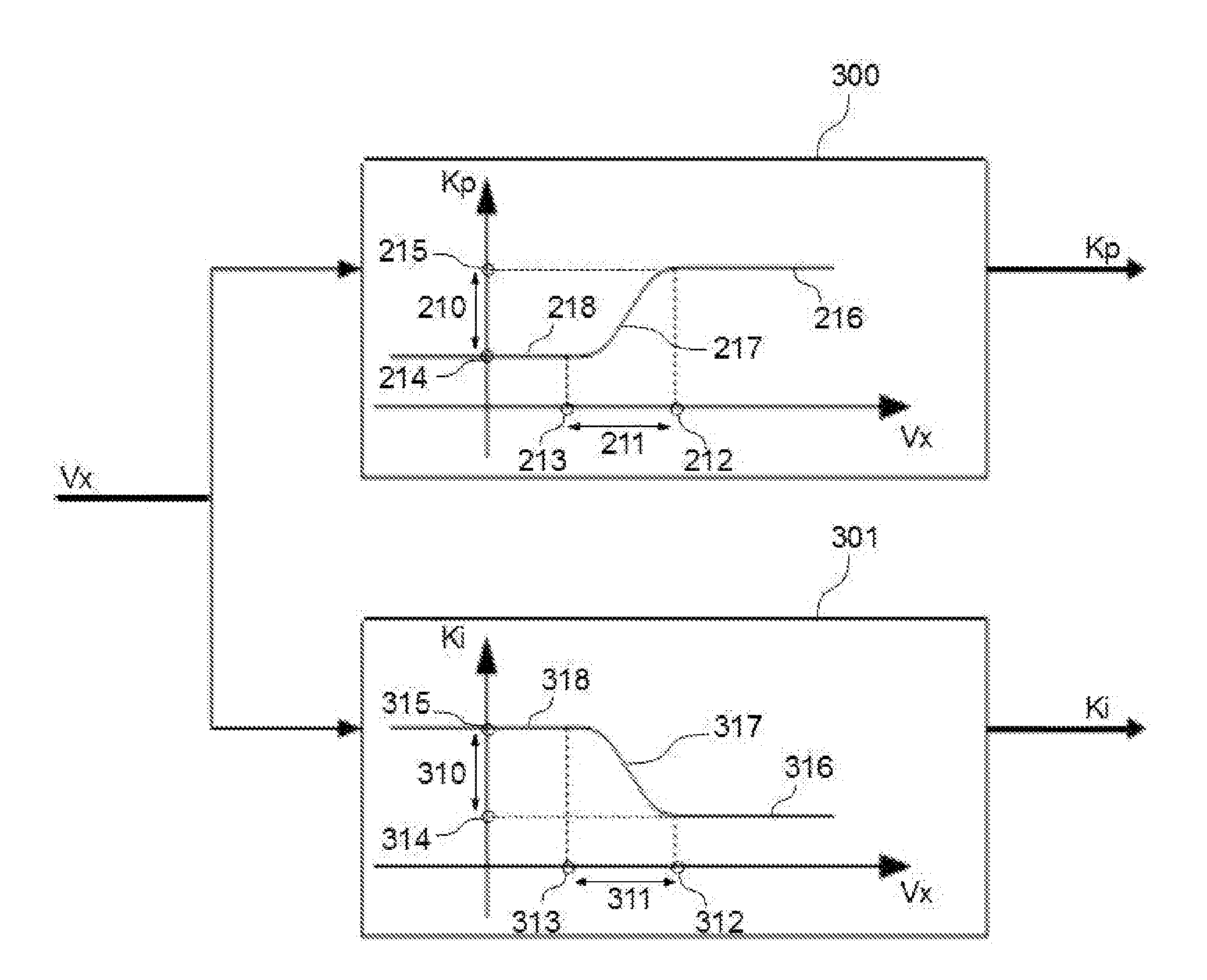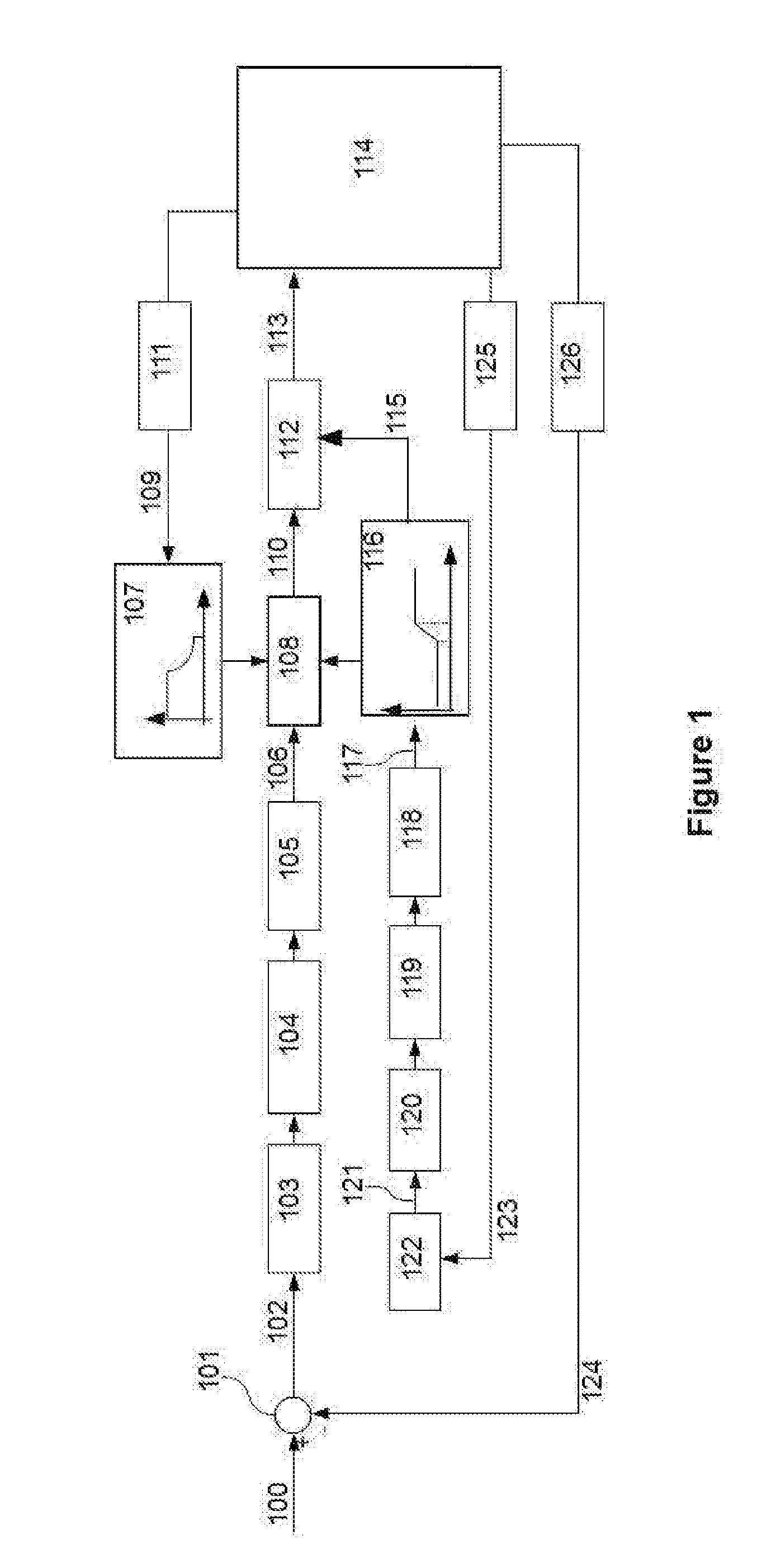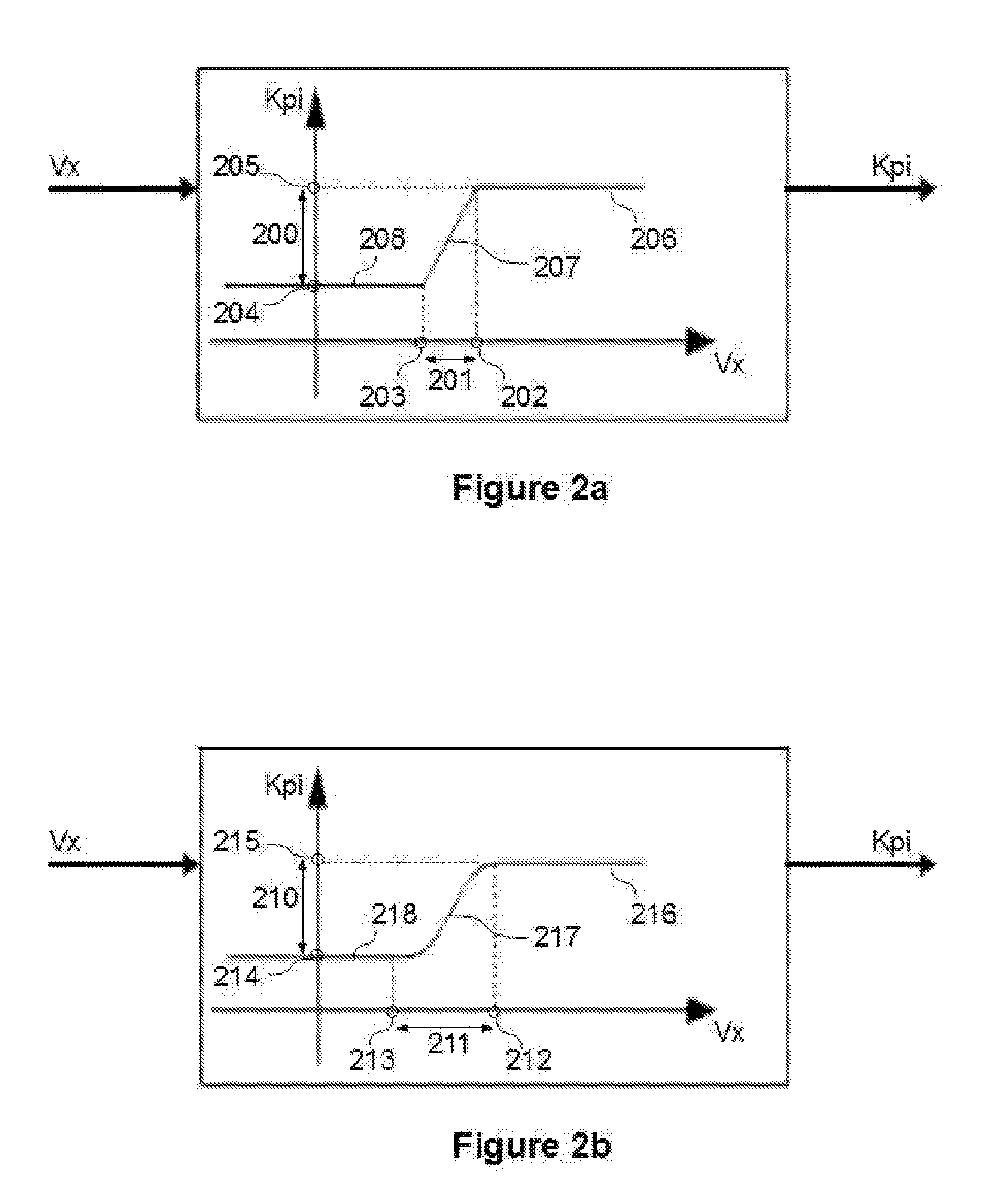Method of operating a wind turbine
- Summary
- Abstract
- Description
- Claims
- Application Information
AI Technical Summary
Benefits of technology
Problems solved by technology
Method used
Image
Examples
Embodiment Construction
[0039]In the following description, numerous specific details are set forth in order to provide a thorough understanding of the present invention. It will be understood by one skilled in the art however, that the present invention may be practiced without some or all of these specific details. In other instances, well known elements have not been described in detail in order not to unnecessarily obscure the description of the present invention.
[0040]FIG. 1 is a block diagram illustrating a wind turbine system suitable for performing examples of methods of operating a wind turbine provided by the invention. In particular, this figure shows a block representing a wind turbine 114 having a rotor with a plurality of blades, a nacelle, and other elements which are not particularly relevant in the context of the present invention. This figure also shows one or more pitch systems 112 for pitching the blades, a system 126 for determining a speed of the rotor, and a PID controller 108.
[0041]...
PUM
 Login to View More
Login to View More Abstract
Description
Claims
Application Information
 Login to View More
Login to View More - R&D
- Intellectual Property
- Life Sciences
- Materials
- Tech Scout
- Unparalleled Data Quality
- Higher Quality Content
- 60% Fewer Hallucinations
Browse by: Latest US Patents, China's latest patents, Technical Efficacy Thesaurus, Application Domain, Technology Topic, Popular Technical Reports.
© 2025 PatSnap. All rights reserved.Legal|Privacy policy|Modern Slavery Act Transparency Statement|Sitemap|About US| Contact US: help@patsnap.com



